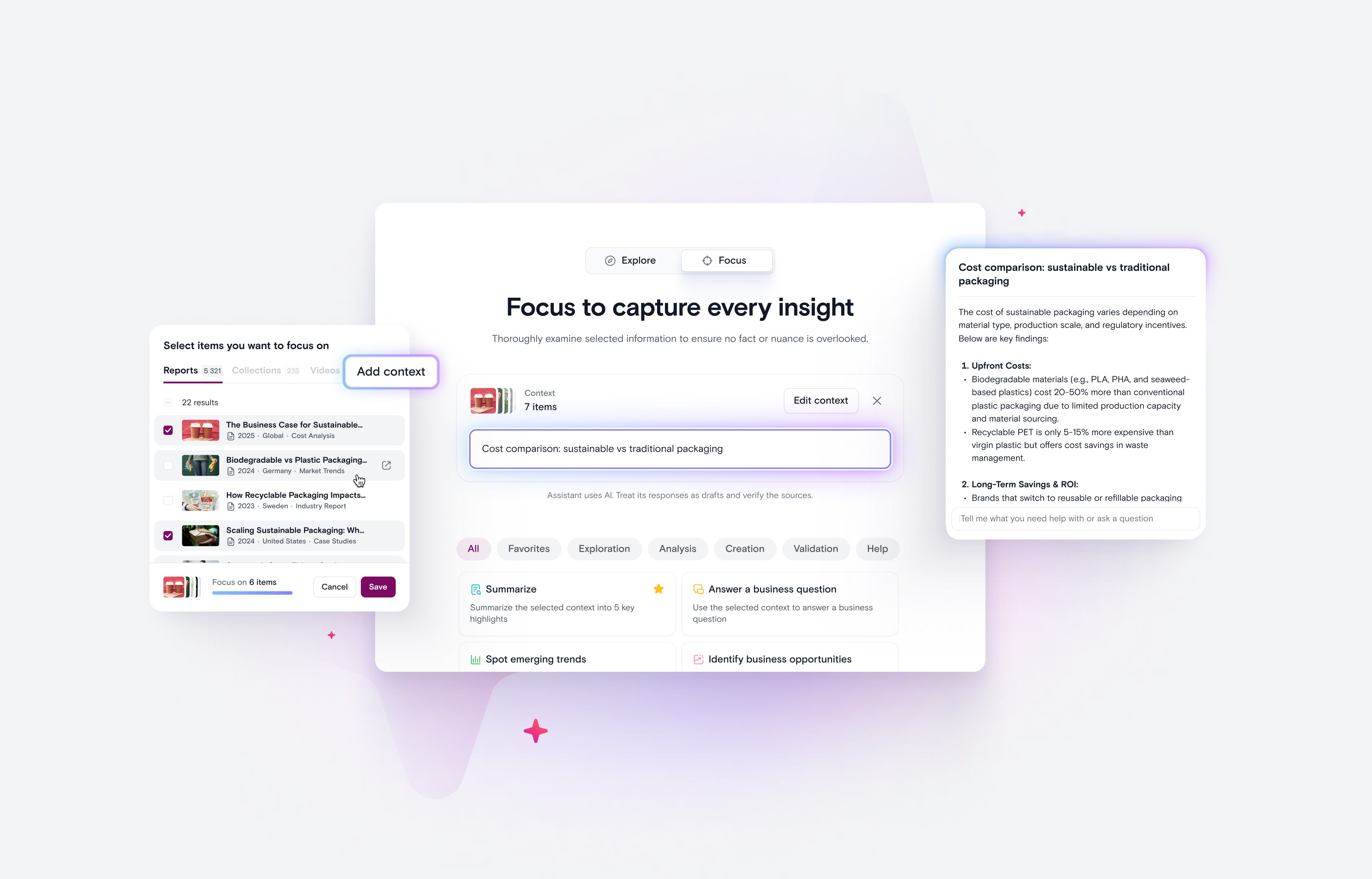5 Best Practices for Global Insights Collaboration

Collaboration is hard, and distance makes it even harder.
Whether you’re working in a global organization, a hybrid set-up, a fully remote environment, or a combination of those three, collaboration can quickly get complicated and stressful.
One reason for this is what is known as the mutual knowledge problem, coined by Catherine Durnell Cramton, a Professor of Management at George Mason University. In a study of 13 geographically dispersed teams, she found that maintaining mutual knowledge is a key challenge. This is often represented by 5 primary types of mutual knowledge failures:
-failure to communicate and retain contextual information
-unevenly distributed information
-difficulty communicating and understanding the salience of information
-differences in speed of access to information
-difficulty interpreting the meaning of silence
Coming up with a concrete plan to address these challenges is an excellent way to improve collaboration between and within insights teams. In this article, we’ll explore 5 steps you can take to enhance global insights collaboration at your organization.
Step #1: Make the most of meeting time
One way to improve global collaboration is to make the most of meeting time. Instead of spending meetings getting everyone up to speed, it’s better to use that time discussing complex ideas and raising important questions.
For example, instead of starting the conversation off with “Do you know where I can find that file about X?”, you can go straight to “I’ve read that file about X, and here’s what I think we should do. What do you think?”.
Not only does this make your collaboration more meaningful, but it can help make it more time-efficient too. A double win.
More efficient meetings also leave room for more informal chats and small talk, which are crucial for deepening trust and building productive working relationships.
Reserving meetings for more meaningful conversations, personal or work-related, can boost dispersed collaboration efforts by enhancing knowledge exchange. And it can also make them more fun.
Step #2: Embrace asynchronous communications
Part of making the most of real-time meetings is embracing asynchronous communications. When it comes to dispersed collaboration, they’re helpful for many reasons. First, it reduces the amount of instant responses expected, which makes it easier for everyone to maintain focus at the tasks at hand.
Asynchronous communications are also quite beneficial for teams that are spread across different countries, continents, and timezones. Even if the occasional early morning or late night meeting is still an inevitable event at most global organizations, it helps if those meetings are chosen carefully.
And particularly when it comes to reading and absorbing more complex information like market research and insights, asynchronous communications allow everyone to engage with material on their own terms.
Step #3: Keep everything in one place
When you can’t all physically be in the same place, it’s essential to create centralized digital spaces. Of course, keeping literally everything in one place can get messy fast; that’s why it’s better to designate specific places for different types of information and communication.
For example, you might choose to have all written communications in a specific Slack thread and use one cloud-based insights management platform for all market research and insights.
While it might seem obvious, being clear about where everyone can find information and ensuring that everyone can access it easily often goes overlooked.
For example, unevenly distributed information and differences in speed of access to information were 2 of the mutual knowledge failures found above.
Making sure that you have the right technology to enable quick access to all relevant research and insights can give your global collaboration efforts a major boost.
Step #4: Invest in multilingual tech
One way to ensure speedy access to information is to make sure that everyone can use their native language as needed.
However, that’s just one reason why investing in tech that supports multiple languages is crucial for global collaboration.
It’s also a matter of financial resources because it will help your organization make the most of all your market research and insights. Even if there are differences across markets, there are still likely valuable learnings that can be used to inform new research projects. Your team might even discover that you already have the answers you were looking for.
Investing in technology that supports multiple language also helps with step #3 presented above. If everyone can’t use the same tools because of a lack of language support, then it’s going to be a lot more difficult to centralize information.
But perhaps the most important reason is to create a more balanced power dynamic. If all tools are chosen with the needs of just one team in mind, it can strengthen the in-group/out-group dynamics that often cause issues with global collaboration.
Step #5: Share knowledge with intention
Lastly, it’s important to be intentional with how you share knowledge. Whether you’re preparing for a particular project or looking to improve ongoing collaboration efforts, it’s well-worth your time to look at what works and what needs work in your existing workflows.
The 5 Dimensions of Knowledge Sharing can be a useful framework to apply here because of the particular complexity of sharing knowledge on a global level. This means looking at what type of knowledge is being shared, why it's being shared, who’s sharing/receiving it, how it’s being shared, and when it’s being shared.
Thinking about knowledge sharing in this way can be especially helpful when trying to lay the foundation for clear communication and identify any cultural differences.
For example, Team A might share a research report with the broader group acting under the assumption that everyone will automatically know to read it thoroughly before the next check-in meeting. But that might not be evident to members of Team B unless it is directly stated.
Creating consensus about the different knowledge sharing patterns and behaviors can help to prevent stress and misunderstandings later on.
Practice makes perfect
While all of these steps can help to improve the experience and output of one-off global projects, the benefits are enhanced with ongoing efforts.
The costs and effort required to kick off any single project goes down, and you’ll learn how to collaborate with your colleagues more effectively.
But more importantly, creating a culture of knowledge sharing on a global level can also create unexpected opportunities for spontaneous collaboration, boosting creativity and innovation.
That’s why the ultimate best practice is to make global insights collaboration an ongoing effort.
Related Content

To Maximize the Value of Your Research, Start with Knowledge Management
Sarah Wiggins Mar 27, 2025

Stravito Enhances GenAI Assistant to Accelerate Time-to-Insight
Charlotte Hilton Mar 20, 2025
.png?width=1200&name=2021%20Blog%20CTAs%20(7).png)
